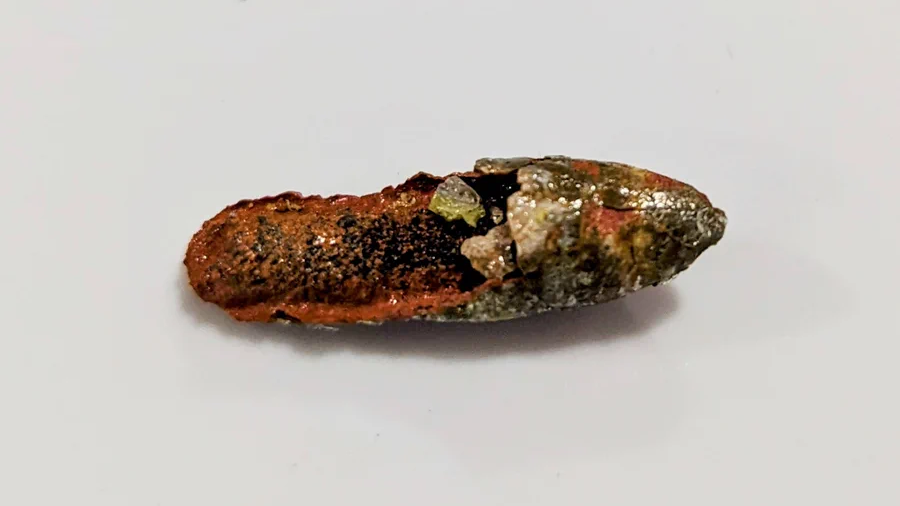
If you're interested in making your own batch of the LK-99 superconducting material that's grabbed headlines around the world, you might be in for a shock at the complexity and nebulousness of the procedure. And as we'll detail below, you might also find difficulty sourcing some of the materials needed.
If one person has stood among the eddies of the LK-99 superconductor drama as it happens in the US, that person is Andrew McCalip. The R&D engineer with California-based Varda Space Industries, McCalip has been at the forefront of public, independent replication efforts around the serendipitous superconductor, open-sourcing his work through Twitter and live-streaming the cooking process over Twitch - a relatively rare generosity. From his process, we can glean more information about the elusive LK-99 compound, its synthethization process, how difficult that process is in the face of restrictions around some of the required materials, and the somewhat "spotty" manufacturing process described in the original Korean paper. You can see his efforts in the two albums of images below.
The main issue in replication stems from the cloudy process described in the original Korean paper — the documentation for making the material is incredibly vague. This fact is made evident by the buzz surrounding replication attempts, but it's also led to a veritable graveyard of failed samples in McCalip's possession.
Materials scientists will tell you that for baking processes, essential data include the temperature (at around 725 º C in a vacuum), how long it takes to bake, and what temperatures (the paper gives a baking time-band of 5-24 hours, which as you can imagine, introduces a lot of error), and the rate of quenching (that is, how fast should the samples' temperature be forced to drop).
The rate of quenching isn't even mentioned in the original Korean paper, leading McCalip (and other replicators, we imagine) to perform a sort of Russian roulette that's led to several differing, alien-looking samples of the LK-99 compound — and a number of broken ampules containing proto-attempts at synthesizing the compound. McCalip estimates that 2/3 of baked vials are rejects due to the lack of detailed information on the manufacturing process, a "yield-wall" that other researchers too will have to contend with.
As we've dived into before, LK-99 is a compound that results from reacting lead sulfate with a copper-phosphorous compound. The ingredients are usually easy to commission — red phosphorus and copper to synthesize copper phosphide, and lead sulfate and lead oxide, which together form a mineral called lanarkite.
As it's currently understood, the addition of copper into the lanarkite baking process forces some of the lead atoms to be replaced by copper atoms in an unpredictable and currently incontrollable ratio. It seems that it's these copper atoms displacing lead that leads to LK-99's superconductive properties (due to the emergence of what are known as Fermi bands), manifested in the hallmark emergent magnetism (courtesy of the Meissner effect) and zero resistance to electrical conductivity (most of the drama surrounding LK-99 today surrounds its claimed room-temperature superconductivity not having yet been replicated, however).
On perhaps a less optimistic note, however, it seems the frenzy around LK-99 - and its almost "kitchen-counter" manufacturing requirements have dried up an unsuspecting worldwide supply chain.
As McCalip put it, it was relatively tough to secure one of the particular ingredients, red phosphorous, as it's a controlled substance that can also be used to synthesize morphine derivatives. But the combined brain power of Twitter devised that he could secure a shipment of copper phosphide (fewer synthetization steps) through a local California lab. According to him, he also managed to secure a supply from Poland before the supply dried up, a perhaps meaningful bit for the worldwide efforts to replicate and better understand LK-99.
The relatively cheap and abundant base minerals mean it's unlikely they'll be long-term bottlenecks toward LK-99 manufacturing at scale (if that's the actual road we're on). But the worldwide supply chain isn't ready for sudden "black swan"-imposed demand jumps, which means that the current street price for Copper Phosphate has climbed precipitously towards the $20,000-per-kilogram ratio. There's a scenario where the mineral supply bottleneck could hinder research efforts; unfortunately, the world of minerals and chemistry is vulnerable to supply hoarders that aim to turn a quick profit, although it's a much more well-regulated arena than, say, GPU and game console purchases. Fortunately.
In the end, McCalip and Varda's replication attempts resulted in a small, unsuspecting flake of LK-99 showcasing the same Meissner-effect-induced magnetic levitation — the first reported "floaty rock" in US soil that's being sent to the University of South California (USC) for additional testing. You can see that in action by expanding the below tweet.
Meissner effect or bust: Day 8.5We made the rocks pic.twitter.com/ygVOATBaHDAugust 4, 2023
All in all, that's not a bad result for a "couple days" work: McCalip managed to be the first in US soil to actually demonstrate what seems to be a Meissner-effect levitation on the LK-99 flake he managed to synthesize. But considering the current outlook on the supply of certain materials, it seems that other DIY replicators will have a hard time attempting to "own their own LK-99." Perhaps it's best to wait until the manufacturing process has been better detailed across replication papers. The flux around LK-99 is still a messy and confusing one, but that mist is bound to be lifted - one superconducting, levitating way, or the other
Tom's Hardware tried to contact Andrew McCalip for commentary but we haven't received a response yet. We'll update if we learn more.
"creation" - Google News
August 06, 2023 at 12:32AM
https://ift.tt/RhmIGJz
Engineer Details Messy LK-99 Superconductor Creation Process - Tom's Hardware
"creation" - Google News
https://ift.tt/9WuJG45
https://ift.tt/nQSBTq5
Bagikan Berita Ini















0 Response to "Engineer Details Messy LK-99 Superconductor Creation Process - Tom's Hardware"
Post a Comment